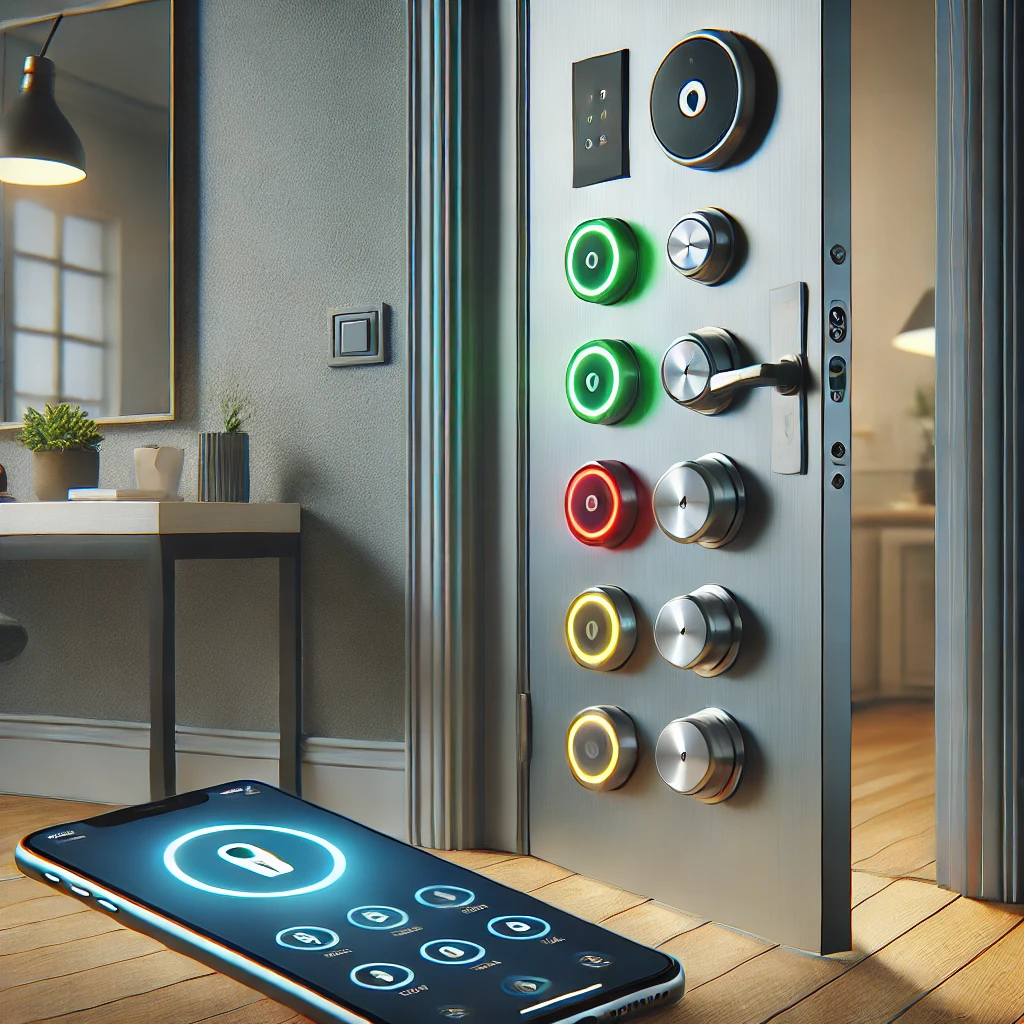
Smart locks are becoming an essential part of modern home security. They offer the convenience of keyless entry, allowing you to lock or unlock your door from anywhere using your smartphone or smart home assistant. No more fumbling for keys or worrying about whether you locked the door. However, like all technology, smart locks can sometimes experience connectivity issues that might leave you frustrated. In this article, we’ll explain how smart locks work, what the lights on your lock mean, and how to troubleshoot common problems.
What Are Smart Locks and How Do They Enhance Home Security?
Smart locks are digital door locks that replace traditional mechanical locks. They can be controlled remotely via a smartphone app, smart home system, or even voice commands with devices like Amazon Alexa or Google Assistant. With features like remote access, automatic locking, and virtual keys, smart locks are a great way to boost your home security.
They are especially useful if you tend to forget your keys or need to grant access to others without being physically present. For example, you can send temporary access codes to house cleaners, guests, or delivery people. Smart locks can even integrate with other smart devices in your home, like doorbell cameras, to give you a complete security system at your fingertips.
But sometimes, despite all their advantages, smart locks can run into issues, particularly when it comes to connectivity. Let’s dive into some of the most common problems and how you can fix them.
Smart Lock Light Indicators: What the Blinking or Steady Lights Mean
Most smart locks come with light indicators that help you understand what’s happening with your lock. The lights can tell you whether your lock is connected, locked, unlocked, or if there’s an issue. Here are some common light signals you might see:
- Solid Green Light: Your lock is working properly and has successfully locked or unlocked the door.
- Solid Red Light: The lock is either low on battery or experiencing a problem that needs attention.
- Blinking Yellow or Amber Light: This typically indicates that there’s an issue with the connection, like Wi-Fi or Bluetooth interference.
- Flashing Blue or White Light: Your lock is trying to connect to the app or smart device. It may also indicate that it’s ready for setup.
Understanding these light signals will help you diagnose what might be going wrong with your smart lock.
Troubleshooting Smart Lock Issues: Common Connectivity Problems and Fixes
When you notice that your smart lock isn’t working properly, it’s important to figure out whether the issue is related to power, connectivity, or the lock itself. Here are some of the most common problems and how to solve them:
1. Wi-Fi or Bluetooth Connection Problems
- Cause: If your lock relies on Wi-Fi or Bluetooth to connect to your app or smart home system, any disruption in the connection can cause issues.
- Fix: Check your Wi-Fi network and make sure your lock is within range. If it’s a Bluetooth issue, ensure that your phone or smart device is close to the lock. You might need to move the lock closer to the router or hub to restore the connection. Sometimes, restarting your router or Bluetooth connection on your phone can help fix the problem.
2. Low Battery
- Cause: A low battery is one of the most common reasons why a smart lock might stop working. Most smart locks come with a low-battery warning, but if you miss it, the lock might stop functioning altogether.
- Fix: Replace the batteries as soon as you notice the low battery warning. Make sure to use the correct type of batteries as recommended by the manufacturer. Some smart locks also have backup power options, like a micro-USB port to connect an external battery when the batteries are dead.
3. App Syncing Issues
- Cause: Sometimes, the lock and app can get out of sync, meaning the app doesn’t register the lock’s status (locked or unlocked).
- Fix: Check that your app is updated to the latest version. If the app is already up to date, try logging out and logging back in, or reinstall the app. You can also reset the lock by following the manufacturer’s instructions.
4. Incorrect Installation
- Cause: If the smart lock wasn’t installed properly, it may not function correctly. This could be due to incorrect wiring, alignment issues, or faulty sensors.
- Fix: Double-check the installation instructions and ensure that the lock is properly aligned with the door and the latch mechanism. If you’re unsure, consider contacting the manufacturer for support or hiring a professional installer.
How to Maintain Your Smart Lock: Battery Checks and Firmware Updates
To ensure your smart lock keeps functioning smoothly, regular maintenance is key. Here’s what you can do:
- Check the Batteries: Regularly check the battery level and replace them when needed. Some smart locks send you notifications when the battery is low, but it’s still a good idea to check it every few months.
- Update the Firmware: Manufacturers frequently release firmware updates that improve performance, security, and fix bugs. Make sure your lock’s firmware is always up to date by checking the app for available updates.
- Clean the Lock: Dirt or dust can interfere with the lock’s performance. Wipe down your smart lock and keep it free from debris.
Conclusion: Ensure Consistent Security with Regular Smart Lock Maintenance
Smart locks provide an added layer of convenience and security to your home, but they can encounter issues from time to time. By understanding what the lights mean, troubleshooting common problems, and maintaining your lock through regular battery checks and firmware updates, you can ensure that your smart lock remains reliable and efficient. With the right care, your smart lock will continue to protect your home and offer the convenience you need.